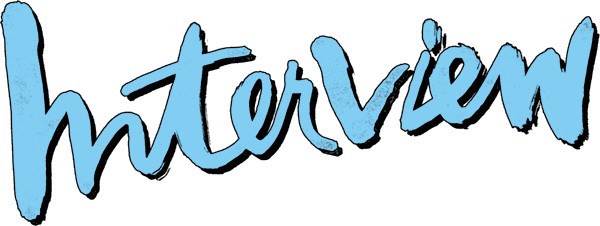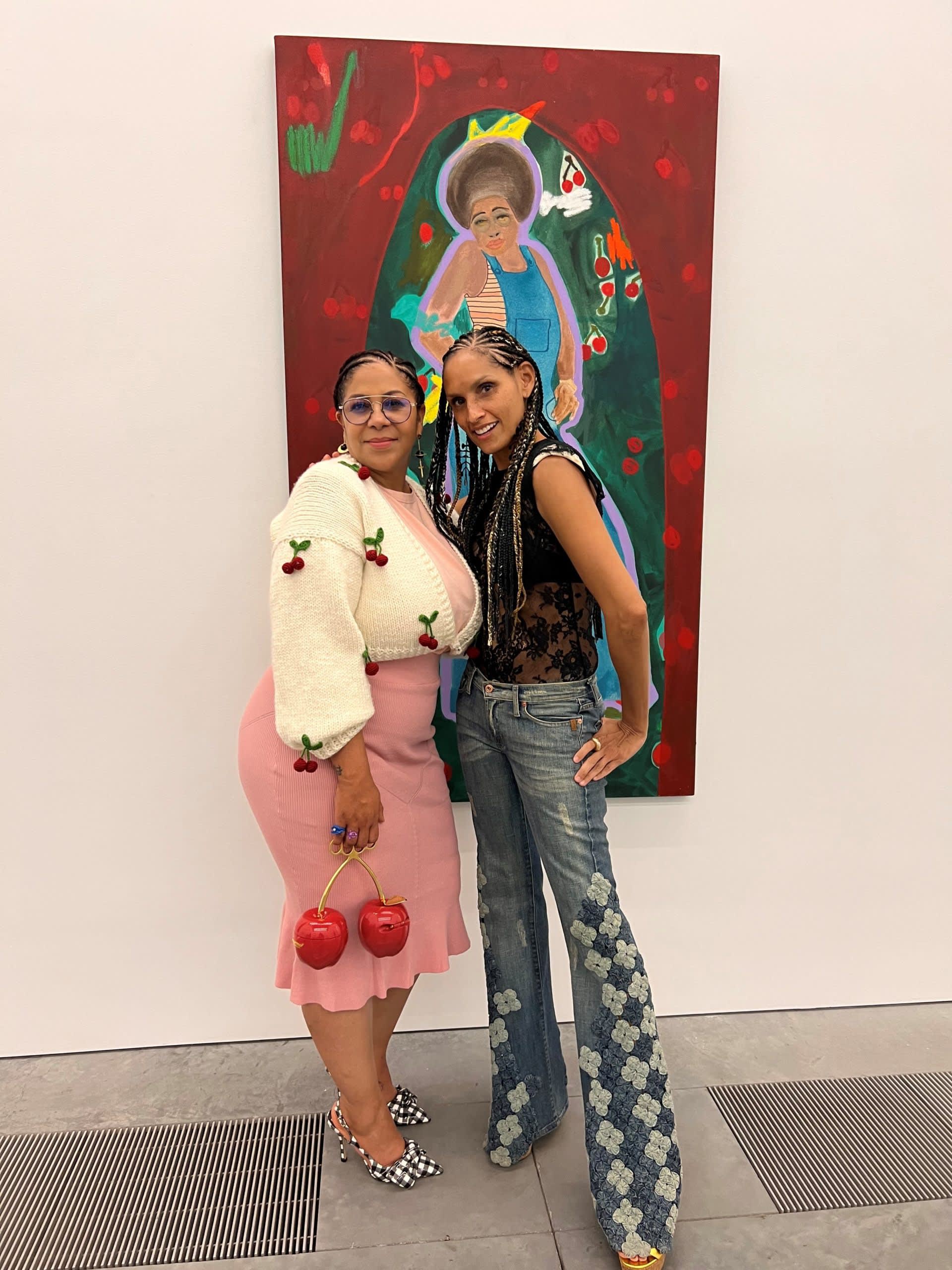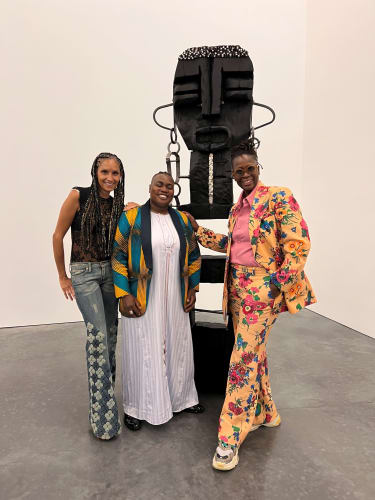
From their first project at Volta to last year’s monumental group show at Pioneer Works, collector Racquel Chevremont and artist Mickalene Thomas, the curators behindDeux Femmes Noires, have left their mark on New York City. In their latest show, “Set it Off” (now on view at the Parrish Art Museum in Water Mill, New York) the duo showcase their commitment to the evolution of six Black women artists featured in the exhibition: Leilah Babirye, Torkwase Dyson, February James, Karyn Olivier, Kameelah Janan Rasheed, and Kennedy Yanko. Below, Chevremont and Thomas tell us about the inspiration behind the show, and fill us in on the importance of timing, liking what each other is looking at, and caring for artists beyond the gallery walls.
RACQUEL CHEVREMONT: Okay, what should we talk about… Mickalene, I know that we had been thinking quite a bit about doing an exhibition that was all female-driven in a museum space. We had been talking about a different institution previously, and then we pulled out of that because we decided it wasn’t the right fit. Is that how you remember thinking about this initial idea for a show with six powerful women?
MICKALENE THOMAS: I think it was exactly what you’re saying. We were already in conversation and excited about doing a show of this caliber with all women. Some of them were already on our list, so it made the process a little easier, especially with the short timing.
CHEVREMONT: It was also keeping with what we wanted to push forward, which isn’t to say that it’s always going to be all female-driven…
THOMAS: But we were excited about that the most. When we have the opportunity on this platform, we’ll use that agency to really drive it through, to say, “let’s really highlight some female artists because they often don’t have these platforms, these institutions and museums.”
CHEVREMONT: We did actually bring certain artists that… You introduced me to Leilah [Babirye]’s work.
THOMAS: You were very connected and introduced me to February [James’s] work. I think just through the synergy of us. Oftentimes if you have collaborators or partners in business, in life that work together, they don’t necessarily like what each other offers. We happen to like what we’re looking at separately.
CHEVREMONT: Or at least respect each other enough to say, “Oh, okay. Initially that’s not somebody I would look at, but I’m going to look a little closer because I totally respect…”
THOMAS: Exactly. We respect each other’s insight. You have a fantastic eye and way of seeing things that is very different from an artist, but also this great passion that comes through with how you’re looking at art and how you investigate when getting to know the artist. Talking with you about that is very exciting because it’s from a completely different lens than how I may approach it, from an artist’s viewpoint.
CHEVREMONT: When we do studio visits together, the most exciting part is that you’re able to pull stuff out of the work that I may not see initially, with respect to medium or the strokes… So I think collectively that’s why we work so well together.
THOMAS: Yeah, [laughs] and it’s fun going to studio visits. When we went to February’s studio, she was nervous, but I was also nervous as an artist. She was excited to see me and have us there.
CHEVREMONT: February’s someone that I’ve been trying to work with for years. I’m trying to figure out the best situation for her, so when this came along, it was–
THOMAS: Perfect timing.
CHEVREMONT: Perfect timing for her and her career. We really took a lot of that into consideration, too, where people are in their careers and what’s happening at this moment for them.
THOMAS: Look at someone like Torkwase [Dyson], who has a really incredible career and [is] doing amazing things as far as working with institutions and commercially with galleries, but also just exhibiting internationally. But I don’t think many people are as familiar with her work in this particular audience…
CHEVREMONT: And they all have stuff happening outside of this show right now, too.
THOMAS: Yeah, like Leilah has the Brooklyn Bridge Park exhibition that she’s in called “Black Atlantic.” And I think Karyn [Olivier] has something that’s about to debut in Boston. And then Kennedy [Yanko] at Art Basel Unlimited.
CHEVREMONT: We really didn’t know all of the things that were going on with the artists. But it was great to find that out when we put their names down and then reached out to all of them and everyone was just like, “Oh no, we’re so busy.” Then they were like, “But for you guys, we’ll do it. We’ll figure it out.” We’re so lucky in that respect. I feel like we’ve been able to get a reputation for really taking care of the artists and being very thoughtful.
THOMAS: I mean, that’s one of our passions, advocacy and mentorship. Beyond the curatorial, we’re invested in their careers, and we’re constantly talking about them and recommending them for different opportunities.
CHEVREMONT: I felt really good about that. I remember when we sat down with the museum, and they were very nervous. They were like, “So what are you guys going to do?”
THOMAS: They did not know what to expect. And all we kept saying is, “Don’t worry, don’t worry. Don’t worry.”
CHEVREMONT: They were like, “Do you have any artist names yet?” We weren’t ready to share.
THOMAS: It was such short notice. I mean, we never really jump into doing a show. But it was such an important opportunity.
CHEVREMONT: Yeah, you can’t beat this time of year at that institution. When we got the opportunity, we were like, “Oh my God, like everybody and their mother is gonna be in the Hamptons at that time.”
THOMAS: And then getting Kennedy who was crazy busy. Having all of these projects and still coming through on top. That’s what we look for, artists who have that deep commitment to their own process and career, and say, “You know what, this is something I wanna do. I’m rolling up my sleeves, and whatever it takes, I’m in it.”
Racquel Chevremont, Kennedy Yanko, and Mickalene Thomas.
CHEVREMONT: Even Kameelah [Janan Rasheed] who had been traveling—every time I reached out to her, I was like, “Oh my God, she’s not responding.” And then it was like, “I’m in Ireland.”
THOMAS: Her wall piece, I can stand in front of for hours. It is so incredibly powerful.
CHEVREMONT: She was one that we really had to put a lot of faith in, and we both were super committed and were like “We’re not worried. No one can reach her, but I know she’s gonna be here and she’s gonna do it.”
THOMAS: They were so wild. They were all like, “I can’t believe she just did this.”
CHEVREMONT: Just came in over a weekend and created this.
THOMAS: And I think that’s why we work well together and the artists trust us, because they see the effort that we’re putting in with the exhibition. We’re not just lip service, we’re actually there. We’re unpacking, we’re installing, sometimes we’re picking up a brush. We’re on our knees. We’re mixing, we’re drilling. We’re busy people, collectively and separately. We value our time, but also theirs. And we’re willing to put pressure on the institutions if we need to, and be their voice to speak about what their needs are.
CHEVREMONT: We’ve also been very fortunate within our careers. Because we’ve been at this for so long on two different ends of the spectrum within the same art world. We’ve made a lot of friendships, and people trust us.
THOMAS: Because we really allow the artists to present the best work that they can. As you were speaking, I was thinking about how we almost didn’t have Torkwase in the show. And then I was like, “Do you have anything in your own collection?” And she had all of this amazing work.
CHEVREMONT: It’s one of the reasons to hold on to your own work. Because then you can also loan it so that it gets seen. So often, as an artist, some of your paintings enter into the world, and you don’t know where they’re at and then they never get seen again. So the minute I said that, she was like, “Oh, now you’ve got me.”
THOMAS: Every piece is from her own personal collection. And everyone’s wanting to buy one. We’re like, “Nope.”
CHEVREMONT: She’s not selling. That’s a good point.
THOMAS: So what’s next for us, do you think?
CHEVREMONT: Well, we know what’s next, but we can’t announce the next institution. But we’ve got Vilebrequin, that crazy swimwear collaboration.
THOMAS: It launches in December, right.
CHEVREMONT: In Miami. That’s the goal.
THOMAS: I was thinking about after doing this show and Pioneer Works, I’m thinking we can also… Oftentimes the Whitney Biennial has curators.
CHEVREMONT: I knew you were gonna go there.
THOMAS: I just wanna plug that because I think we can do it.
CHEVREMONT: We could also do something in Venice.
THOMAS: I think institutions oftentimes need to be a little more innovative and think outside the box. Of course, all our ideas go beyond what their budgets are, but they end up doing it because they’re like, “Wow, this is great. Yes, let’s go for it.” We have a long list of things we want to do.
CHEVREMONT: But for the current show, expect to see something you would not expect to see in the Hamptons, or at the Parrish. Expect to discover some incredible artists that are working in all different mediums. They all have their own voice and their own language. And you’re gonna see a lot more of them in the coming years, which is exciting.
THOMAS: And also this is a really good time to visit the East. I’m only plugging this because it’s all of these incredible Black artists exhibiting in the Hamptons right now. You have Faith Ringgold. Ed Clark and Jack Whitten. You don’t usually see them exhibiting out in spaces like this.
CHEVREMONT: I think after Covid they really have done a lot in the Hamptons with respect to bringing culture there because so many people have moved there full time. The new residencies that have cropped up…
THOMAS: What’s the name of that architect who has a residency?
CHEVREMONT: Peter Marino. And he has an installation by Vik Muniz, which is exciting.
THOMAS: So much to see!
Racquel Chevremont and February James.


